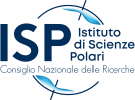
- Founded in 1845 as Queen’s College Belfast, we became an independent university in 1908.
- Today, we are ranked 198 in the world (Times Higher Education World University Rankings 2023) and are a member of the Russell Group of UK research intensive universities, combining excellence in research and education with a student-centred ethos.
- The University is a seven-times winner of the Queen’s Anniversary Prize for Further and Higher Education. This prestigious award is the highest national honour available to universities and FE colleges across the UK, approved directly by The Queen and Parliament.
- Telecommunication Group at QUB is the UK’s largest research, development and exploitation base in physical layer wireless, and one of the strongest in Europe.
- Ranked in the top 75 globally for telecoms engineering / wireless communications (2021 Shanghai Ranking’s Global Ranking of Academic Subjects).
- At present, it is home to around 50 academics, engineers, postdocs and PhD students.
Pre-concentrator for CO2 and CH4
Development of a pre-concentrator for the CO2 and CH4 measurement (Lead: QUB, contribution: Senseair, NILU)
- In this task, we will utilize a microfabricated preconcentrator (μPC) device with integrated micro-heaters and temperature sensors to improve the detection limit of NDIR sensors developed by Senseair. The work on μPC development will be subdivided into following distinct sub-tasks.
- Selection of appropriate candidate adsorbent material (e.g., commercially available activated carbon, graphite oxide, and SiO2/Al2O3 particles) for extraction of the target compounds from air.
- Fabrication of preconcentrator devices using standard microfabrication techniques (photolithography, deep reactive ion etching, thin metal film deposition, and anodic bonding) and thickness optimization of the selected adsorbent material to ensure ppb detection limits can be achieved for subsequent detection by the NDIR detectors.
- Optimization of sampling time for each target compound to achieve the desired limit of detection.
- Evaluation of different desorption temperatures for the target compounds to reduce power consumption and improve desorption efficiency.
- Development of an automatic electronic system to control sampling time using a commercial mini-micropump (e.g TCS D250BLZ-AIR) and temperature of the pre-concentrator device.
Integration of the pre-concentrator with the multi-channel sensor (MISO sensor 2) (Lead: QUB, contribution: Senseair)
- This task will integrate μPC with the Senseair NDIR sensors followed by both lab and field testing. Integration of μPC with the NDIRs sensing module will provide two main advantages, 1) increase the detection limit from existing tens of ppm to tens of ppb (possibly even lower) for each target compound and 2) remove any interfering compounds (e.g., water vapour) from the sample to further improve selectivity of each detector.
- Hardware and software developments will be required to integrate both components and end up with a fully automatic system capable to simultaneously sample and concentrate ambient air, desorp the compounds and inject them into the multi-channel sensor.
Optimization and characterization of the ‘pre-concentrated’ version of the multi-channel sensor (Lead: QUB, contribution: Senseair)
- Lab tests will be performed to optimize the measurement sequence: sampling time, desorption temperature and time, measurement time. Experiments will also be conducted to evaluate the performances of the sensor for CO2 and CH4: detection limit, accuracy and dependence to environmental factors.
- Deployment of integrated μPC NDIR sensor system in selected pollution hot-spots.
Contact Info
Dr. Tuan-Vu Cao, project coordinator. The Climate and Environmental Research Institute NILU.

This project has received funding from the European Union’s Horizon Europe research and innovation programme under Grant Agreement No. 101086541.











